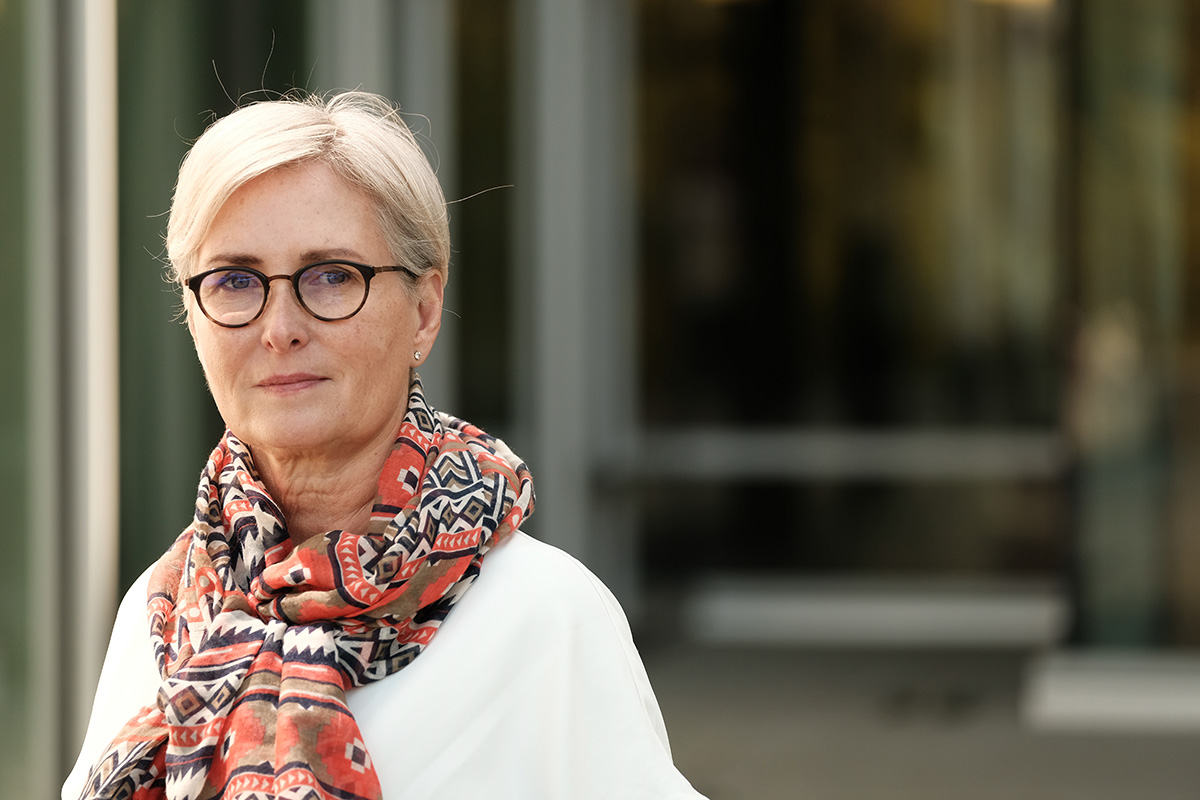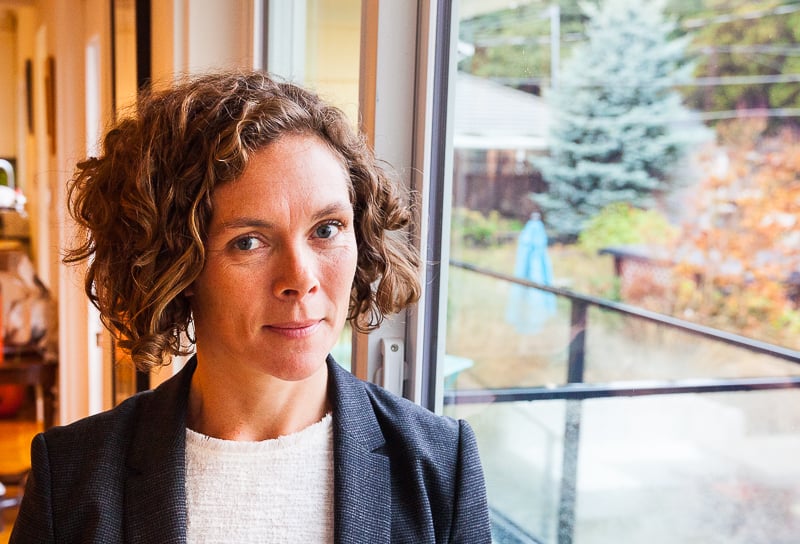Maegen Giltrow had no experience with child welfare law before 2016.
That’s when the Huu-ay-aht First Nation asked her to be the legal representative on a four-person panel looking into how the nation should respond to its child welfare issues.
Almost 40 per cent of the 220 Huu-ay-aht children were receiving child welfare services of some kind. Fifteen per cent were in government care.
Less than two years later, Giltrow was in court representing a Huu-ay-aht mom whose child — her first — had been apprehended by the ministry three days after being born.
Giltrow won two cases — at the BC Supreme Court and in provincial court — that helped the mother regain custody and led to changes to the Ministry of Child and Family Development breastfeeding protocols for infants in care.
Ministry reasons for the infant’s removal varied from an initial claim that it was because the mom herself had been a child in care to later reports a community member had called the ministry about the woman during her pregnancy.
But Giltrow says no official reason for the apprehension was ever given.
“As a legal advocate I requested a number of times that they give their reasons in writing, which they are required to do under the legislation, but they just continued to fail to do so,” said Giltrow, who has specialized in working with Indigenous legal issues over more than a decade.
The removal upended the lives of the mother and grandmother, who moved from their home of Port Alberni to Courtenay, B.C. They lived in a motel for three months so the mother could breastfeed and bond with her baby.
Initially the ministry said the mother had only two hours per weekday to breastfeed, and was not allowed to nurse her child weekends because there was no ministry staff to supervise her.
Giltrow won a BC Supreme Court ruling increased that time to at least six hours a day, every day, which eventually increased.
Throughout the process, the ministry decision-making didn’t seem to be based on any firm principles or rules that considered the best interests of the infant, Giltrow said.
It was a brutal experience for mother and child, she said. The mom struggled to re-establish their bond every day and breastfeeding, a challenge for many new mothers, was even harder.
“It was incredibly stressful for her,” Giltrow said. “It was very hard to keep their spirits up during that period of time, which should have been a happy time, because she so clearly wanted to bond with her baby.”
A B.C. provincial court decision in March 2018 ordered the return of the baby to her mother after almost three months of separation.
As much as the system is hard on parents, the foster care system is also incredibly rough on the children and youth in care. Youth who have been in care are more likely to go to jail than graduate from high school on time, and across Canada kids in and from care make up 60 per cent of homeless youth and a third of homeless adults.
But parents often face an uphill battle in getting their children back from the ministry. And without a lawyer it’s unlikely they will get the happy ending the Huu-ay-aht mother had.
Susan Strega, a social work professor at the University of Victoria, notes the “vast, immense, huge difference in power between the child welfare ministry and parents who get caught up in child welfare processes.”
Both the federal and provincial governments have pledged to spend more money on preventing children from coming into care in the first place, while returning those in care to their families where possible. In the case of the Huu-ay-aht, they delivered, promising $4.2 million in federal and $400,000 in provincial funding over five years to help fund their child welfare supports — about $4,000 a year per child.
But there are still 6,490 children in care in B.C., 64 per cent of whom are Indigenous. Strega believes the number could be even higher. Under the BC Liberals, she said, youths who had signed independent living agreements were not counted as a child in care, she says.
“They stopped counting children in the home of a relative as children in care,” Strega adds. “Those are two ways in which the ministry has historically manipulated statistics.”
Most of the children in care have parents. And while social workers will usually offer parents a path towards regaining custody of their children, the ministry sets the terms and parents have little recourse. The ministry might require parenting classes, Strega says, which can be problematic for Indigenous families who aren’t given an option for culturally relevant classes.
And parents often can’t fight back, she said. The ministry is looking for compliance, and parents’ reaction to the orders can affect their chances of regaining custody of their children.
Lost in the legal system
As a lawyer who specializes in Indigenous litigation, Giltrow had previously represented the Huu-ay-aht in two cases on land rights and title, and forestry issues.
It wasn’t until she participated in community consultations in 2016 and 2017 and heard Huu-ay-aht members talk about their experience with the child welfare system that Giltrow got a sense of what the parents were going through.
“The stories of helplessness that we heard, and parents being subjected to a set of benchmarks that they were expected to meet to get their kids back, and then arbitrary changes of those benchmarks once they were reached — those are the sorts of things that obviously should not be happening.”
Existing supports for parents were totally inadequate, she said.
The panel looking at Huu-ay-aht child welfare issues also included former elected First Nations Chiefs’ Kim Baird and Lydia Hwitsum and infant psychiatrist Myles Blank. Its report, released in the spring of 2017, provided 30 recommendations on how the Huu-ay-aht’s elected government could respond to child welfare concerns.
The nation began implementing the recommendations right away, including hiring more outreach workers to support families before the ministry gets involved in their lives.
Outreach workers were in place before the year was out, including one assigned to the Huu-ay-aht woman pregnant with her first child. The worker received the first call from the mom when she went into labour in early January 2018. And it was the worker the mom reached out to three days later when the ministry apprehended her baby.
Giltrow received a call from the band within two hours of the apprehension.
“In some senses, at least from Huu-ay-aht’s perspective, the Huu-ay-aht system worked,” Giltrow said of their quick response to the apprehension. And after nearly three months of court battles, “it worked to stop what was an unwarranted removal,” she said.
Odds against parents
Parents can challenge the ministry in court to regain custody of their children. But that rarely works if they don’t have a lawyer, said former representative for children and youth Mary Ellen Turpel-Lafond.
“It’s a very expensive process, it’s a very complex system. Their rules are complicated,” she said. If the family is Indigenous, the challenges can be even greater. “There are not a lot of lawyers in the province with expertise in Indigenous child welfare, yet actually in the court system,” Turpel-Lafond says.
And paying a lawyer is impossible for many families involved in child welfare.

Children typically end up in government care because their parents are poor, Nico Trocmé, director of McGill University’s School of Social Work, told The Tyee earlier this year. Trocmé was the principal researcher on the 2008 “Canadian Incidence Study of Reported Child Abuse and Neglect,” unfortunately the most recent major study.
It found at least a third of child welfare cases include allegations of neglect. Indigenous families were eight times as likely to be involved with child protection for neglect than non-Indigenous families.
Neglect is another word for poverty, Trocmé said. Children might be hungry because their family is too poor to buy food; housing might be overcrowded because that’s all they can afford.
And poor parents can’t afford to pay a lawyer to help with the battle, as fees can quickly climb into tens of thousands of dollars.
“These are complex trials,” said Turpel-Lafond, a former judge and now a professor at the University of British Columbia’s Peter A. Allard School of Law and director of the university’s Indian Residential School History and Dialogue Centre, with her own legal practice with a specialty in Indigenous child welfare.
“Some of the cases I’ve had over the years where a child needs to be returned safely to a community and family would take more time and effort than, say, a complex criminal trial.”
Turpel-Lafond says she “frequently” assisted parents who contacted her office about issues with the ministry when she was the children’s representative from 2006 to 2016. But the limits on her role meant she could only request meetings with the ministry or ask lawyers to take on a family’s case pro bono.
Turpel-Lafond’s successor in the representative role, Bernard Richard, echoed her point that the office can offer advice to parents, but not much else.
With the exception of some particularly helpful local ministry offices and advocacy by First Nations communities, supports for parents dealing with the ministry are inadequate, he said.
“The system is not adequate in a whole bunch of ways, and this is certainly one of them,” said Richard, who stepped down as representative this past August.
Families dealing with the ministry can get support from Parents Legal Centres in Vancouver and Surrey, with seven other locations scheduled to open starting this month. However, their services are only available to parents who do not pursue a trial to challenge a ministry decision.
Legal aid through the Legal Services Society is supposed to provide lawyers for parents in child protection cases.
But inadequate legal aid funding has made accessing the service difficult. Despite a recent increase, the society says there still isn’t enough funding to cover the need.
Even when a family does get access to a Legal Aid lawyer, Turpel-Lafond says they don’t often have enough time to get to know a family’s circumstances before the trial.
“The lawyer’s job in child welfare is a really intense one. So if Legal Aid gives you five hours to assist a family at a presentation hearing, no one is going to do that, because a) they’re never going to learn how to do it properly, or b) they’re going to be bankrupt or out of business in six months because of the intense work required to understand the family, to prepare, to organize,” she said.
“It’s an area that needs a real investment.”
The Legal Services Society of BC told The Tyee via email that tariff lawyers actually get 20 hours to work on a case.
And while many families aren’t accessing legal assistance until social workers have removed a child and the case is in court, the Parents Legal Centres, which we will cover in the next article, are trying to support families earlier.
However, Turpel-Lafond notes that Indigenous families in particular are not using the province’s family law system proactively to establish custody arrangements or seek access to their children and grandchildren.
Parents can transfer guardianship of their children themselves if they’re unable to provide care, she said. “You don’t have to wait for the crisis and have the child welfare system swoop in,” she said.
“The access to justice, the barriers in the family justice system have been so profound for Indigenous families, and the child welfare system has had such a firm grip on them, this is one of the systemic problems in our justice system that means that they continue to languish in a very old system that doesn’t recognize the systemic issues adequately.”
Strega says that sometimes parents will try to comply with everything the ministry asks, but their child ends up under a Continuing Custody Order anyway.
“It’s not like there’s any advocacy or support organization for parents who lose their children. There is nothing,” she said.
Giltrow isn’t sure how many hours she spent prepping for the two court cases she won this year on behalf of the Huu-ay-aht mom. But she knows it was much, much more than what is available for any family accessing a legal aid lawyer.
And if the mother didn’t have a lawyer who could dedicate the time it took for Giltrow to successfully fight her case?
“I think that there’s every chance that mom and baby would still be apart, that breastfeeding has fallen away, that the maternal-infant bond wouldn’t be able to be established in those early days,” she said.
In the next part of our series, coming soon on The Tyee, a look at the challenges in providing legal support for parents — and a new model that’s off to a promising start.
Story updated on Dec. 4, 2018 at 3:40 p.m. to clarify which families can get support from Parents Legal Centres and how many hours tariff lawyers receive to work with families.
Read more: Indigenous, Rights + Justice


















Tyee Commenting Guidelines
Comments that violate guidelines risk being deleted, and violations may result in a temporary or permanent user ban. Maintain the spirit of good conversation to stay in the discussion.
*Please note The Tyee is not a forum for spreading misinformation about COVID-19, denying its existence or minimizing its risk to public health.
Do:
Do not: